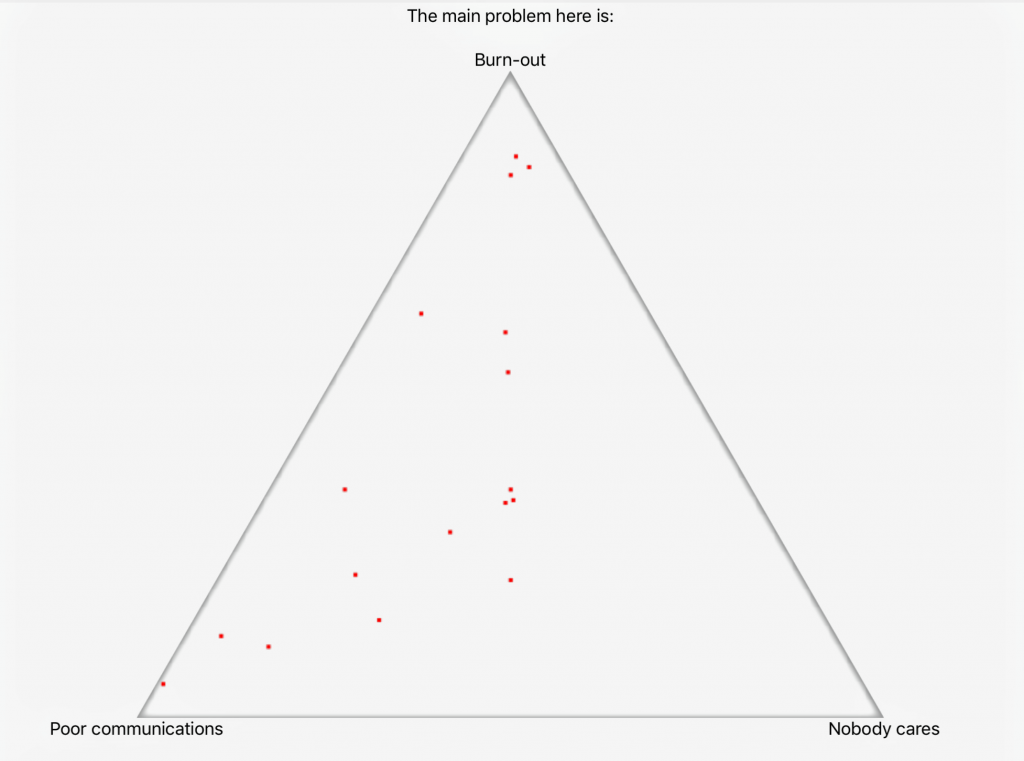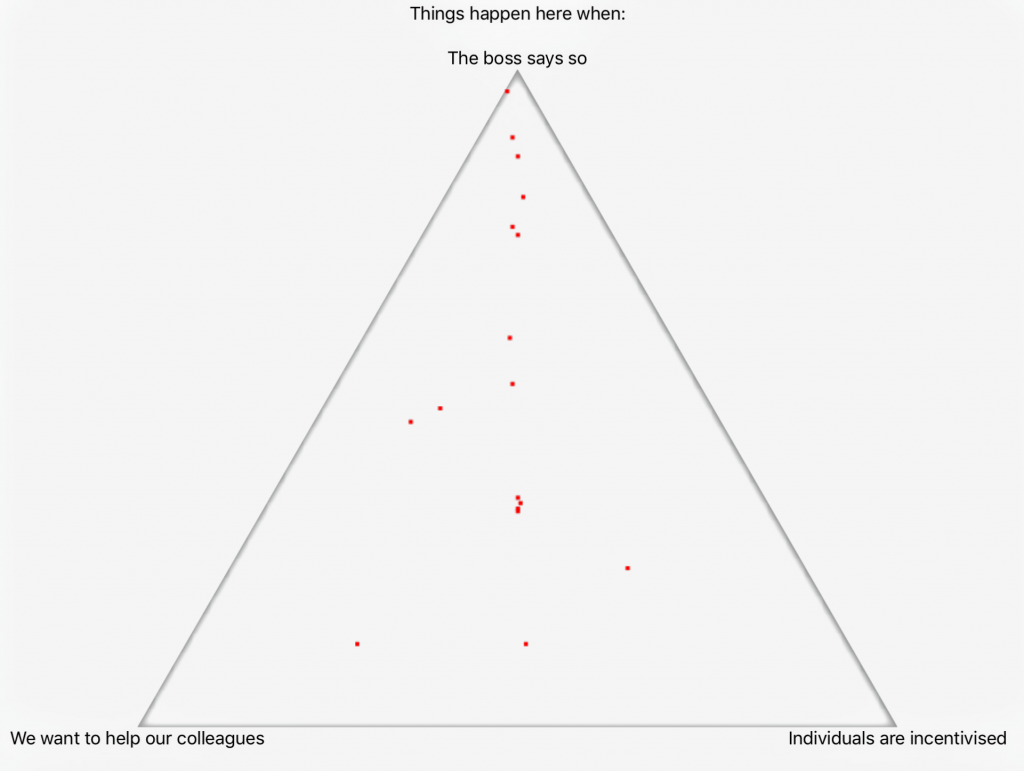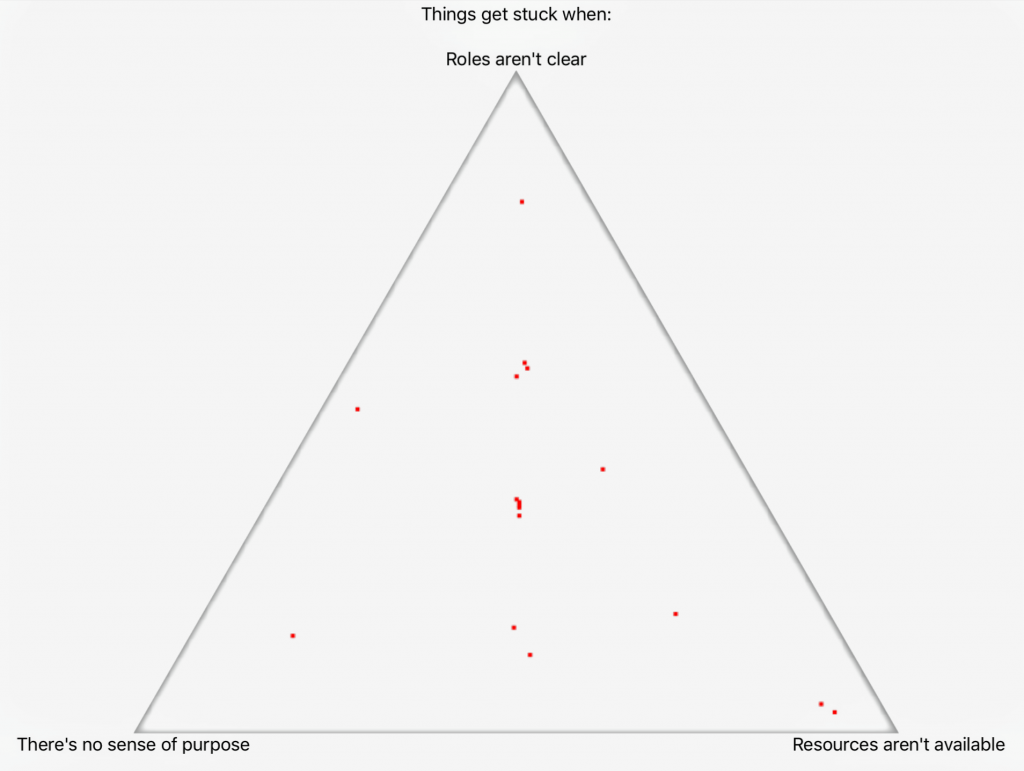In an earlier post on a framework for change, I shared that you are better off calling the work project management when you see change from an ideal endpoint.
Change in workplaces rarely happens through force. You’ve seen that the harder leadership pushes, the more workarounds are developed. When change does stick, we tend to view it from a present into the past bias, which causes us to believe that our planful efforts and sound judgment lead to success. However, when a failure occurs, we see our planful efforts thwarted by people, competition, or other external factors.
This idea of change through reflection raised the questions:
- How can change happen?
- Do people dislike change?
- When we do not know where we’re going, how do we know what is working?
- What method can we use to gather feedback?
- But leaders are supposed to lead, and my value is from knowing what to do.
- When I ask people what they would like to change, they tell me nothing … how can I better understand how to make changes happen?
Change Through Seeing the Current Environment
I’ve been working on better understanding the sensemaker scans from cognitive-edge and decided to use the changeSCAN with a small team going through a significant change.
Sensemaking defined – Sensemaking is the process by which people give meaning to their collective experiences. It is often formally defined as “the ongoing retrospective development of plausible images that rationalize what people are doing” (Weick, Sutcliffe, & Obstfeld, 2005, p. 409).
Also, from Christian Madsbjerb’s book “Sensemaking. The power of the humanities in the age of the algorithm.”
The five principles of Sensemaking:
- Culture – not individuals
- Thick data – not just thin data
- The Savannah – not the zoo
- Creativity – not manufacturing
- The North Star – not the GPS
I supported change progress using a sensemaker called changeSCAN with a small company I’m consulting that had just been purchased by a larger organization. The small company was having challenges with changes in people, processes, and the new procedures that the larger organization was imposing.
I sent the changeSCAN to all the employees, 25; we had 19 responses. The area that I am not showing is the narrative responses. To understand change, you need to hear examples of how people see and experience change within their work context; these stories need to be in their voices instead of aggregated or notes taken by a facilitator during a focus group. When leadership and those who are part of the change see their words as unadulterated, they feel respected and develop more resilient ways to improve things.
The initial question of the changeSCAN is to “describe how change is or is not happening within your organization.” Below are some triads of how change is or is not happening within the company.
The sensemaker uses triads to avoid gaming and loss of information from Likert scaling. Each dot on the triads below is a person placing their change story where they feel it belongs. In the scan, you can hover over or click on the dot to read their change story.

The main problem here is:
- Burn out
- Poor communications
- Nobody cares

Things happen here when:
- The boss says so
- We want to help our colleagues
- Individuals are incentivized

Things get stuck when:
- Roles aren’t clear
- There’s no sense of purpose
- Resources aren’t available
How did change happen?
We shared changeSCAN results with a mixed team of leaders from the parent organization and the small company acquired; we also invited several employees to participate in the meeting. The work followed the framework of change:
- Frame the boundaries – We spoke about common interests and interests that are at odds. From the discussion, we framed 5 areas that are the edges of the work needed to ensure that the small company can succeed and support all the employees’ economic progress. When we called these boundaries (meaning they cannot be crossed), we stuck one boundary on each wall and one on the door. This served as a metaphor for where the interest in change connected.
- Understand your environment – From the changeSCAN data, the environment was clear. As people read the scan and the change stories, they could see themselves and the boundaries in the environment.
- Determine what is working to increase – From the scan, we agreed on what change was and how it worked well, then created projects to increase what is working.
- Determine what is not working to decrease – From the scan, we agreed on what change was and how it was not working, then created some steps to stop or lessen what is not working.
- Agree on what to do and when to meet again – The increase and decrease change projects were given to a team, and they agreed to either increase or decrease work areas.
The small company and I continue to meet. They have told me that things are much better, and the changeSCAN made them feel that their voices were heard and their value was seen. This has led to a quicker change in their support functions and more support for the large corporation’s sales and operations team.
Change does not have to be painful or seen as a grief model (which is self-reinforcing).
When you treat people as intelligent individuals, ask them how they see this change, and work with them to put it in place, much of the perceived resistance disappears.

